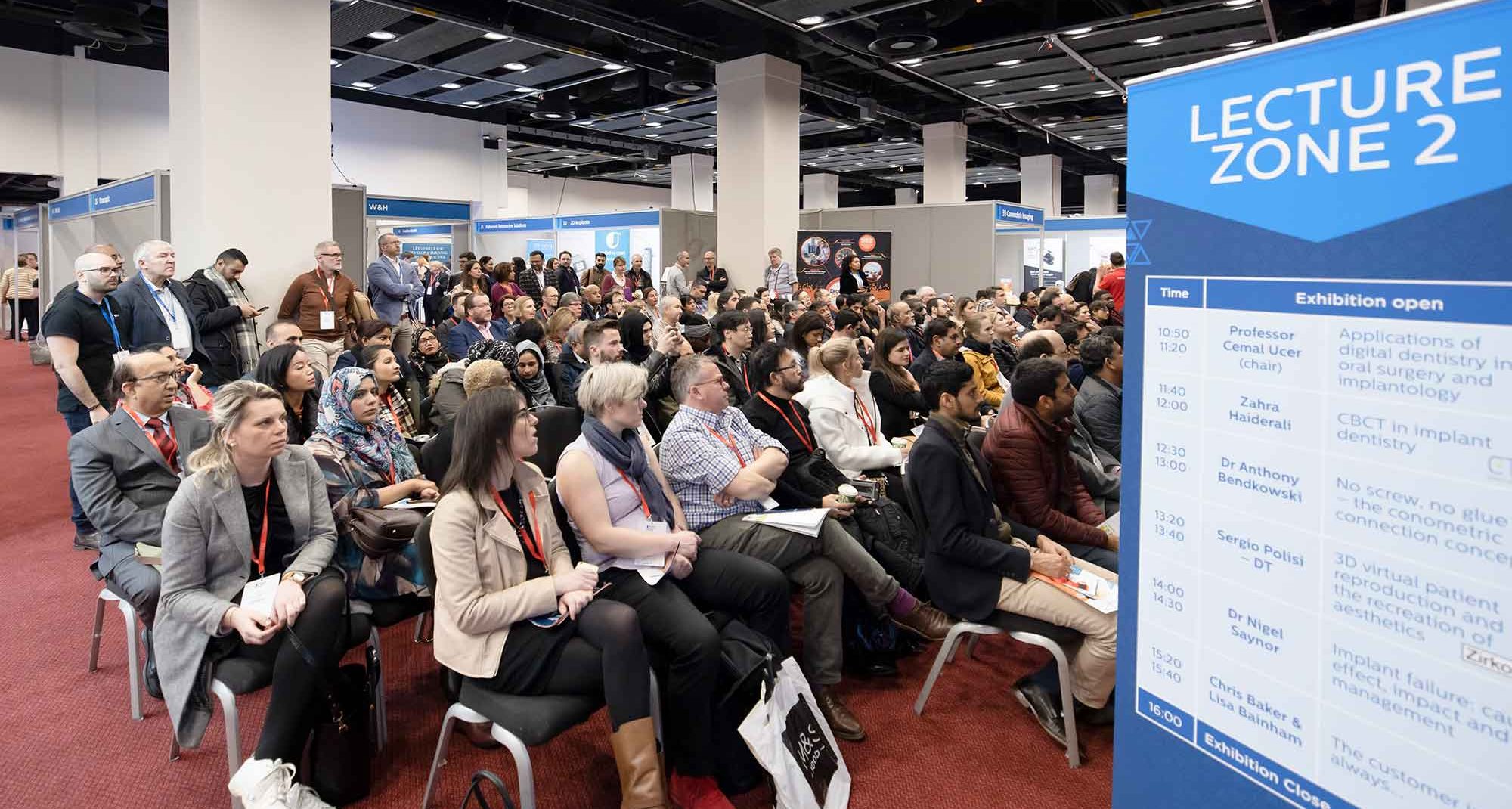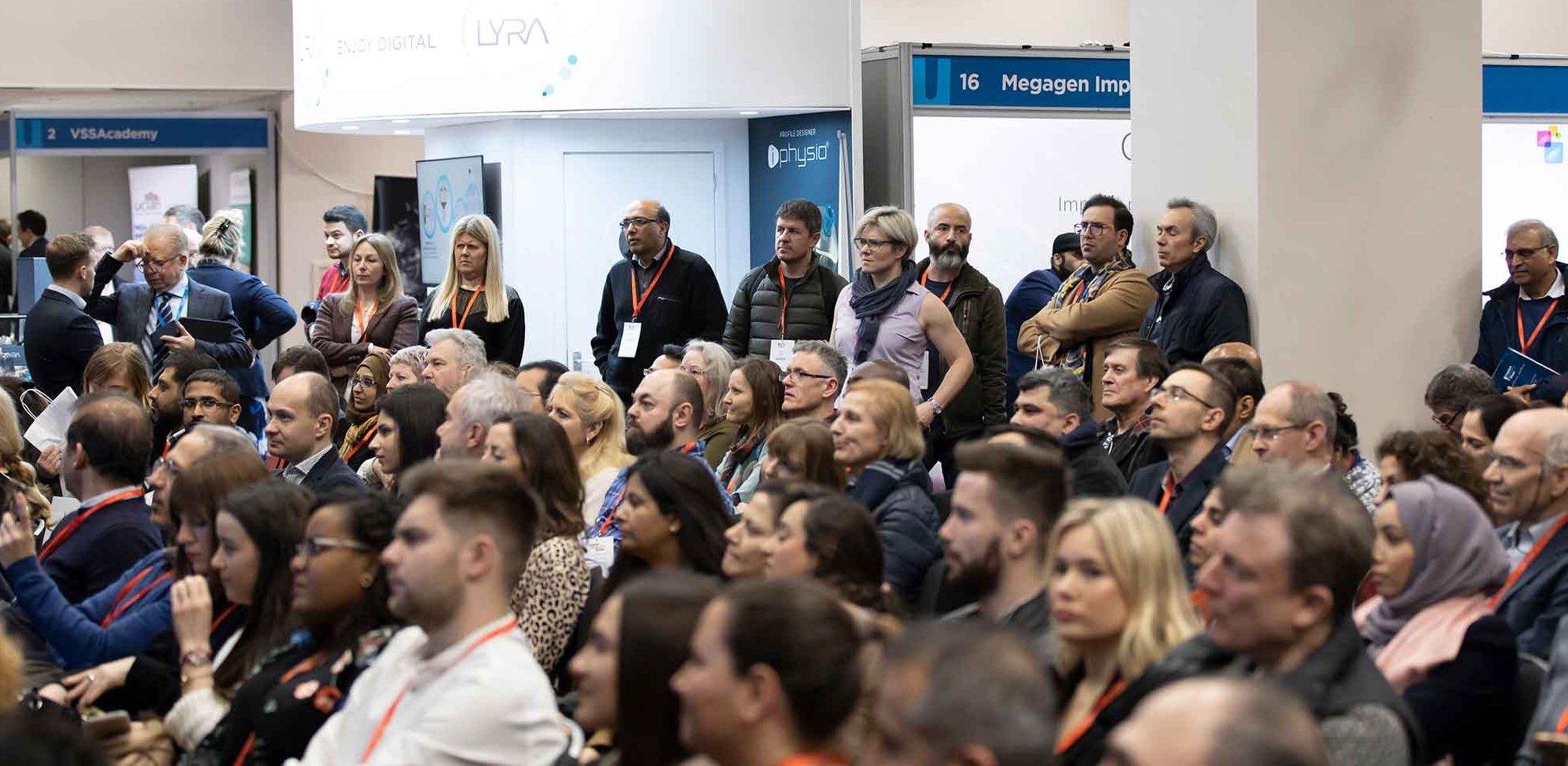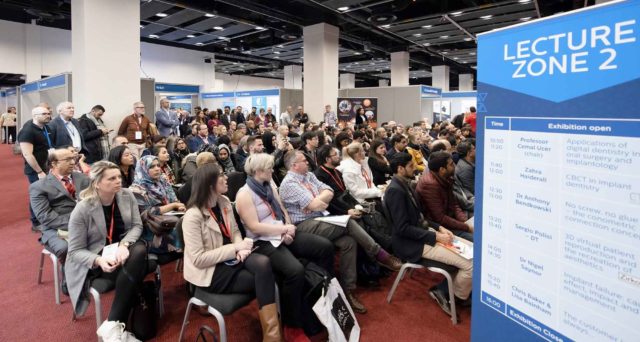 Engaging lectures, networking and cutting-edge exhibitors: the 2020 Implant Dentistry Show had it all. Guy Hiscott reports.
Engaging lectures, networking and cutting-edge exhibitors: the 2020 Implant Dentistry Show had it all. Guy Hiscott reports.
Almost 500 dentists poured through the doors of the Implant Dentistry Show early last month as the event celebrated its second birthday in style.
The premise was simple: a day focusing on maximum-impact implant education. Sixteen of the profession’s biggest names offering quick-fire lectures across two stages. The stage was set with more than 50 exhibitors filling out the space of the Novotel London West in Hammersmith. The Implant Dentistry Show took a star turn.
I had the honour of introducing the day by welcoming the delegates and thanking the speakers.
Implant dentistry is still the most exciting field of surgery. Its potential to change patients’ lives is arguably unparalleled. The Implant Dentistry Show is a celebration of that fact. As well as hopefully providing delegates with a road map to improving your own work in this field.
The basis of everything
Chairing the main stage, Eddie Scher wasted no time in contextualising the importance of the day, as well as his own lecture on managing complications.
Implant Dentistry Today’s editor-in-chief explained: ‘Treatment planning is the basis of everything in implant dentistry. But even with excellent planning, things can go wrong. We must prepare to deal with them when they do.’
As the day wore on, delegates gave plenty of advice on what to do to prepare for things going wrong. There was also lots to help them make sure surgery goes very right, too.
Eddie handed over to Marcus Gambroudes, whose lecture on rehabilitating edentulous patients tried to ensure dentists remained as complication-free as possible.
Selvaraj Balaji succeeded Marcus. He tackled the topic of guided bone regeneration, explaining the history of the technique as well as providing some food for thought on approaching it in practice.
His concise lecture paved the way neatly for the fascinating lectures that followed. With Ben White lifting the lid on intraoral welding – an established, but still widely misunderstood, technique. It provides huge benefits when seeking a swift, passive fit for implant-supported dentures.
The renowned Ashok Sethi, one of the giants of UK implant dentistry, followed Ben. Ashok brought his immense knowledge to bear on the thorny topic of occlusion. He neatly demystified his subject, offering the audience an easily digested overview of essential occlusal concepts. All before leaving delegates with some key tips to apply in their own practices on Monday morning.
[embedded content]
Digital focus
With a free subscription to Implant Dentistry Today on offer, as well as free tea and coffee all day, delegates had every reason to stick around. The lively buzz of conversation filled the exhibition hall enduring throughout the day.
Across on the other side of the tightly packed exhibition hall, the Implant Dentistry Show’s second stage was in full swing as well, ably chaired by Cemal Ucer. This line-up was easily on par with the first, albeit bringing a slightly more digital bent to proceedings. Cemal himself set the tone in this regard. He set about discussing the applications of digital dentistry in oral surgery and implantology.
‘Guided surgery won’t solve all your problems,’ he warned the crowd. ‘But it will make everything a lot safer for you and your patient.’
He explained the digital workflow, celebrating the ease and flexibility it provides. But he cautioned his audience that although it is a powerful tool, digital technology is not a panacea for all surgeons’ problems.
He added: ‘You must have a very good understanding of the anatomy in order to be able to make a success of anatomically guided, prosthetically driven treatment planning.’
Radiologist Zahra Haiderali agreed with his statements. In her lecture she explained the vital role technology can play in providing that understanding.
She explained: ‘An OPG is a two-dimensional depiction of a three-dimensional structure. You simply can’t analyse the site properly without looking at it in all dimensions.’
Challenging assumptions
The digital theme continued as clinical dental technician Sergio Polisi delivered his lecture on ‘3D virtual patient reproduction’. Things took a decidedly more hands-on turn as the afternoon went on.
Anthony Bendkowski acknowledged as much as he opened his lecture on the concept of conometric connections in implant dentistry, cunningly titled ‘No screw, no glue’.
‘It’s very non-digital, this,’ he says. ‘In a way, that’s quite refreshing.’
His discussion on the principles and application of conometric friction went down a storm. With audience members firing questions at him long after finishing his lecture.
Following him, Nigel Saynor pulled no punches as he stalked across the stage, examining the ‘Cause, effect, impact and management of implant failure’ in his characteristically direct manner.
‘We’re here because teeth fail,’ he said. ‘Do you think that what you can produce can be good enough to do better than a natural tooth?’
He went further, challenging the audience’s assumptions asking: ‘What is true success when we’re talking about implants? What are the criteria we look for in our own practices? Only with the knowledge of where failures come from can we seek to prevent them effectively.’

Setting the bar
Over on the main stage, Andrew Dawood – an expert strongly associated with digital technology – was making his own case for the tangible aspects of implant dentistry.
His talk – ‘Simple solutions to complex implant problems’ – revealed how even the lead of cutting-edge referral practices need to pursue a grounded approach to clinical dentistry and patient care.
Speaking to the standing room-only crowd, he discussed everything from materials to screw characteristics, even making reference to his own allergy to cobalt as a means of explaining the importance of being prepared for the unexpected.
If expectations were high to begin with, the 2020 Implant Dentistry Show surpassed them all – the bar has been set high for 2021.
To register for 2021, visit implantdentistryshow.co.uk.
Published first in Dentistry magazine. To subscribe to receive the magazine visit www.fmc.co.uk.
Let’s block ads! (Why?)






